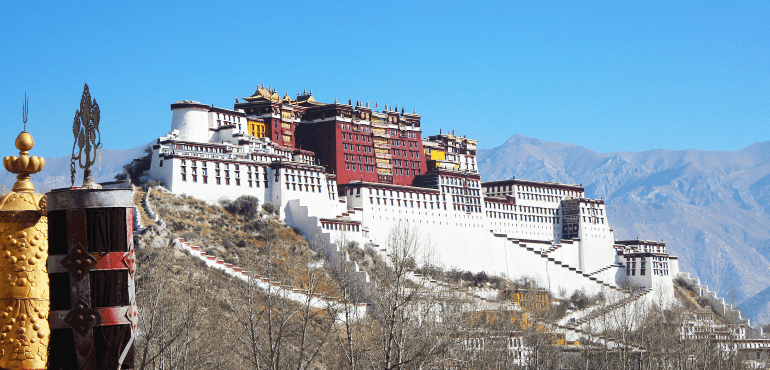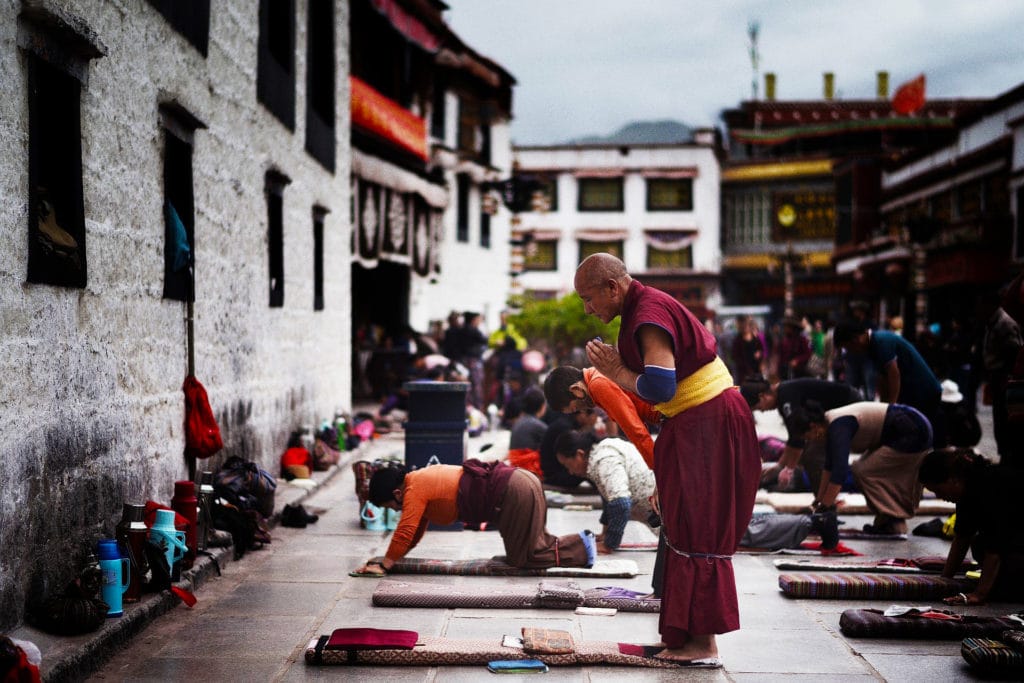Traveling to Tibet in the winter months is one of the best times to head for the plateau. While many people believe that you cannot travel to Tibet in the winter due to it being covered in snow and way too cold, this is not actually true. Winter in Tibet is like winter in any temperate zone climate and is actually no worse than the winters in northern Scotland or the northern states of the U.S.
While it does get cold in the winter months, and there are areas that get a lot of snow, there are also places in Tibet that get little to no snow at all, and where the average winter temperature is actually still above freezing. Few places in Tibet have temperatures above freezing at night, but since you are not going to be wandering around the attractions at night, this is rarely much of an issue.
Ready To Travel? Don't Go Without Travel Insurance.
I recommend SafetyWing Nomad Insurance, an affordable travel insurance offering automatic monthly payments that you can cancel anytime. I've been using it since 2019, and I can assure you it's the perfect solution for nomads like you and me. Learn more by reading our SafetyWing review.Benefits of Tibet Winter Tours
Cost
Cost of the Tibet winter tour is one of the major benefits for traveling to Tibet in winter. Summer is the most expensive time of year in Tibet, as it is the high season for Tibetan tourism. Spring and autumn are the shoulder seasons but are still expensive when it comes to the cost of the tours and hotel prices. More so when talking about flights, as the spring and autumn can be high seasons elsewhere in China and Nepal.
Winter, however, is cheaper. Some tours are even up to 30 percent cheaper in the winter as opposed to the summer. And this is just one of the ways to save money. Hotels in Lhasa and Shigatse have very few visitors in the winter months, and as such, tend to offer more discounts to travelers to get them to stay in their hotel. Rooms can be a lot cheaper, as full-board package costs, and there are even plenty of hotels that waive the single room supplement during the winter months, so you can have a little more privacy.
Winter is also the low season for tourism in China, and this also means flights to China from your home country can be a lot less expensive. With less expensive flights, you have more money to spend on the other things you want on your vacation. There are also some discounts on flights to Lhasa from several airports in mainland China, as well as less demand on a train ticket and easier to get the train tickets during the winter months. With the trains, the price is relevant to the demand, so summer prices are increased. Winter prices are what they should normally be, without the increase in cost due to demand.
Crowds
One of the things that can put some people off traveling to a certain destination in the peak months of the holiday season are the crowds. As millions of people flock to the plateau in the summer months, from June to September, the monasteries and temples get overcrowded, and it can be hard to properly relax in the crowds of people.
Since many people feel that winter is too cold to tour in Tibet, they avoid traveling to Tibet in the low season, which gives you a much better experience in the top attractions of the Tibetan plateau. Sites in Lhasa such as the Jokhang Temple, one of the oldest temples in Tibet and the most sacred temple in Tibetan Buddhism, and the awesome Potala Palace, the former seat of Tibetan Buddhist governance and the winter palace of the Dalai Lama, are less crowded and easier to walk around.
Weather
While the winter in Tibet is cold, especially in some of the more remote areas in the west of the region, Lhasa has a relatively pleasant climate in the winter months, and it does not snow often in the Tibetan capital. Daytimes can see temperatures as high as 10-15 degrees, while the temperature at night can get down to as low as minus five degrees in the depths of winter. However, a warm fire and a large scotch soon put the cold outside out of your thoughts.
The weather can be a little harsher if you are traveling to Tibet, especially to Everest Base Camp (EBC). However, with a good arctic sleeping bag and the right clothing and preparations, you will barely even notice the cold. Just make sure to remember your hat and sunglasses, as the sun can be very bright in the midst of the winter. Winter is also the best time to get to see Mount Everest covered in and surrounded by snow, and the snowy scenery is sometimes more beautiful than the summer landscape.
Winter Festivals in Tibet
During the Tibet winter tour, it is also the time for some of the most important festivals of the Buddhist calendar. Losar, the Tibetan New Year, falls on the first day of the first month in the Tibetan lunisolar calendar, usually around mid-February. The most important and largest festival in Tibet, it is celebrated from around two weeks before the New Year and runs on for around fifteen days after.
Monlam Prayer Festival, which falls on the 4th to the 11th days of the first month of the Tibetan New Year, and is a tradition in Tibet to make offerings and pray. Founded in 1409 by the Buddhist master, Tsongkhapa, in honor of the miracle performed at Sravasti by Buddha, it is one of the most important parts of the whole Losar celebrations. It was first held at the Jokhang Temple, and tens of thousands of Buddhist monks would come from all over the plateau to attend. Still held at the Jokhang, as well as the Sera, Drepung, and Ganden monasteries in Lhasa, the Monlam Festival is as important now as it was 600 years ago.
The last day of the New Year festivities, usually on the fifteenth day of the first month, is the culmination of the celebrations, and the time of the Tibetan Butter Lamp Festival. As darkness falls on the final day, stands are placed to display the stunning artistic details of the myriad of different butter lanterns that have been made by hand to celebrate the end of the New Year Celebrations. Intricately carved and extremely colorful, the Butter Lamps are one of the major highlights of the Losar period.
Authentic Tibetan Experiences
Traveling to a new place is to experience its culture, people and nature, but due to the speedy development and over-commercialization, it is hard to get the authentic experiences of the destination, so as Tibet, during the summertime, you will find tourists almost everywhere and you can only get rid of the tourist trap by customizing your tours to rural Tibet.
If you travel Tibet during the winter months, it is totally different from any time of the year and there is more chance to have authentic experiences, for many Tibetans, winter is the most relaxing time to travel and make their pilgrimages, since nomads are moved to their winter camp and farmers finished their farming season, so you will experience Tibet with very live cultural movement and Tibetan pilgrims from all corners of Tibet. Hence the Tibet winter tours stand out among other seasonal tours.
Traveling to Tibet in winter is the best decision for budget travelers and as well as for adventurous travelers. The traveling is nothing but to get authentic experiences from the places you travel. So winter is the best time to travel to Tibet.





